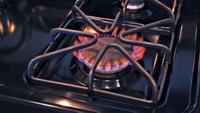Advertisement
Grab your lab coat. Let's get started
Welcome!
Welcome!
Create an account below to get 6 C&EN articles per month, receive newsletters and more - all free.
It seems this is your first time logging in online. Please enter the following information to continue.
As an ACS member you automatically get access to this site. All we need is few more details to create your reading experience.
Not you? Sign in with a different account.
Not you? Sign in with a different account.
ERROR 1
ERROR 1
ERROR 2
ERROR 2
ERROR 2
ERROR 2
ERROR 2
Password and Confirm password must match.
If you have an ACS member number, please enter it here so we can link this account to your membership. (optional)
ERROR 2
ACS values your privacy. By submitting your information, you are gaining access to C&EN and subscribing to our weekly newsletter. We use the information you provide to make your reading experience better, and we will never sell your data to third party members.
Environment
Newscripts
Hydrogen-powered Rocket Launched, Pop Rocks Inventor Passes, Sniff Tests Explained
by David J. Hanson
October 18, 2004
| A version of this story appeared in
Volume 82, Issue 42
As the Department of Energy struggles with moving America to a hydrogen economy, the toy industry is already there. The Hydrogen Fuel Rocket is appearing in stores just in time for the holiday buying rush.
The toy rocket uses tap water and a battery-powered electrolytic reactor using a citric acid catalyst to generate hydrogen that fills a combustion chamber. When the hydrogen pressure gets to about 3 psi, the gas can be detonated and the rocket shoots up more than 200 feet with "helicopter recovery." The toy comes with two rockets, uses six D batteries, and has a remote firing switch, as it is suggested that the user be at least 15 feet away when launching. The device only permits straight-up launching, and it is recommended that children under the age of 10 have adult supervision. And, of course, the hydrogen fuel is touted as clean burning and environmentally safe. The retail price is about $49.95.
Developed by Chicago-based Lund & Co. Invention LLC, the rocket is marketed by Estes Industries, a leading manufacturer of model rocket kits, engines, and accessories.
The technology for the rocket was developed earlier by Lund for a "Create the Future" competition, sponsored by NASA and Emhart Teknologies. The company built a miniature radio-controlled car using a hydrogen/oxygen generator and a modified internal combustion engine with spark ignition. The car placed second in the contest.
William A. Mitchell, forever to be remembered as the inventor of the novelty candy Pop Rocks, passed away this summer, marking the end of a remarkable life in food innovation.
Mitchell, who was 92, worked for 35 years as a food chemist for General Foods Corp. until his retirement in 1976. He held more than 70 patents, according to accounts, including inventions related to Cool Whip, quick-setting Jell-O gelatin, and the orange drink mix Tang. He also helped design a chemical process for developing the color green while at Eastman Kodak.
But Pop Rocks put Mitchell on the metaphorical map. Invented in 1956 but not commercialized until 1975, this hard candy is impregnated with small pockets of carbon dioxide that "explode" in a person's mouth. It is made by heating a candy syrup to 150 °C and pressurizing it with carbon dioxide at 600 psi. When the pressurized syrup cools, some of the carbon dioxide is trapped.
Unfortunately, an urban legend arose around Pop Rocks shortly after the candy became popular. It was said that eating Pop Rocks and drinking carbonated drinks at the same time would cause one's stomach to explode. The rumor got people so concerned that the Food & Drug Administration opened a telephone hotline to assure parents the candy was safe. Mitchell struggled for years to dispel this tenacious myth, but it has persisted even to this day.
The Sept. 13 Newscripts item on sniff tests recalled by Gerald L. Carlson rang a bell with Kay R. Brower of New Mexico Tech, who remembers conducting a blind sniff test of samples sent to volunteers in the 1970s. Brower says she and a colleague did the study using 80 compounds of 12 chemical types, sending 18 to 36 samples to each volunteer. They found that the participants could identify most chemical types correctly from their odors, except for alkyl halides and ethers.
The halides were apparently judged to be hydrocarbons, and the ethers were often mistaken for esters, Brower says. Amides, sulfides, and mercaptans were almost always guessed correctly, but some electron-withdrawing groups (such as carbonyl or nitro) could disguise amine or sulfide compounds. Overall, Brower says, the study results discredit several theories of odor structure correlations based on shape, optical absorption, or adsorption characteristics.
This week's column was written by





Join the conversation
Contact the reporter
Submit a Letter to the Editor for publication
Engage with us on Twitter